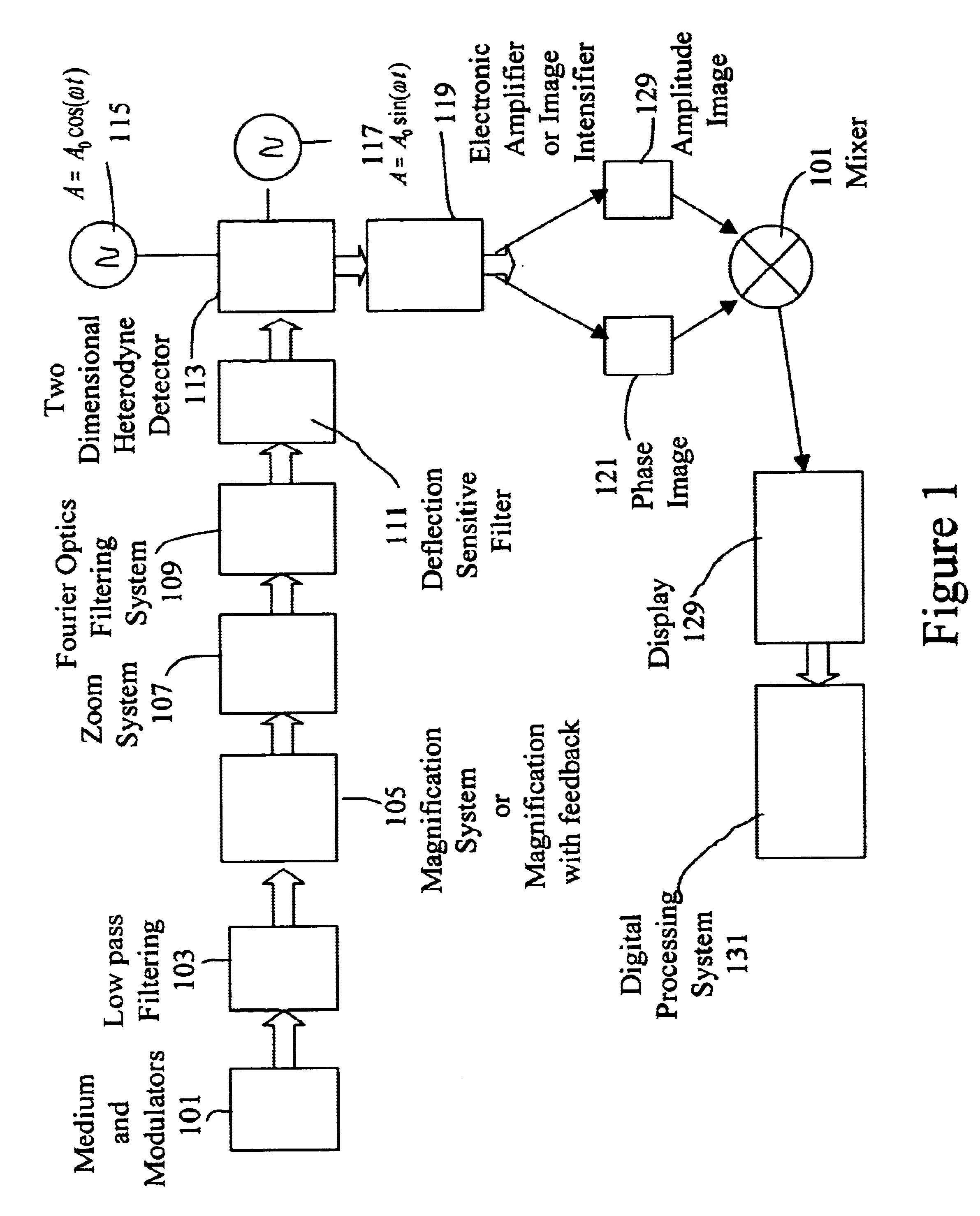2-D microscopic tomographic systems utilizing 2-D deflection sensors
a tomographic system and sensor technology, applied in the field of microscopy and tomography, can solve the problems of reducing the data acquisition time, consuming the process of acquiring data pixel by pixel, and not being able to apply ultra high-resolution microscopes such as atomic force microscopes
- Summary
- Abstract
- Description
- Claims
- Application Information
AI Technical Summary
Benefits of technology
Problems solved by technology
Method used
Image
Examples
Embodiment Construction
A high pass optical filter having a Fourier transform lens coupled to a DC blocking member, receives the output of a modulator for modulating an input image introduced into the system, and for applying a broad, non-focused modulated signal image to the high pass filter.
A zoom lens is provided to enable viewing of selected slices of a three dimensional object image such as a tumor. An image magnification device having a feedback loop is coupled between the high pass optical filter and the zoom lens and a deflection sensitive filter. The deflection sensitive filter is optionally provided for encoding a phase map for certain applications of tomography. A Fourier optics filter is coupled between the zoom lens and the deflection sensitive filter addressed via the back propagation algorithm for distortion compensation.
A two dimensional demultiplexer receives output signals from the deflection sensitive filter, and a calculating device is coupled to the demultiplexer for calculating separa...
PUM
 Login to View More
Login to View More Abstract
Description
Claims
Application Information
 Login to View More
Login to View More - R&D
- Intellectual Property
- Life Sciences
- Materials
- Tech Scout
- Unparalleled Data Quality
- Higher Quality Content
- 60% Fewer Hallucinations
Browse by: Latest US Patents, China's latest patents, Technical Efficacy Thesaurus, Application Domain, Technology Topic, Popular Technical Reports.
© 2025 PatSnap. All rights reserved.Legal|Privacy policy|Modern Slavery Act Transparency Statement|Sitemap|About US| Contact US: help@patsnap.com



